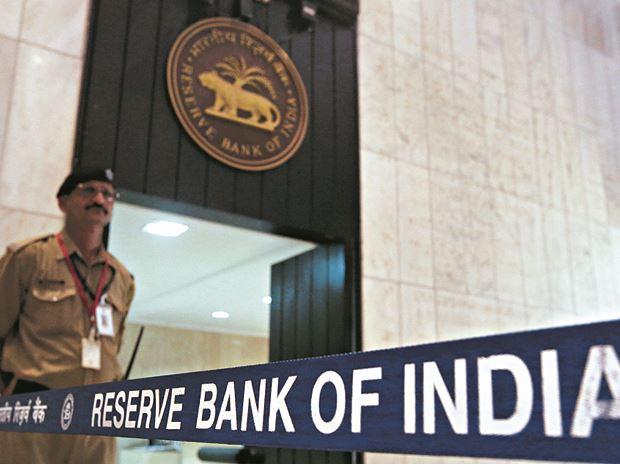In what seemed to be a softening of its stance by the government in its tussle with the Reserve Bank of India (RBI), Economic Affairs Secretary Subhash Garg on Friday said there was no proposal by the Centre to ask the central bank to transfer any specific amount. The issue being discussed was for an appropriate economic capital framework.
Garg’s statement, on Twitter, comes after extensive reports in the media of the latest face-off between the finance ministry and the RBI over the former referring to Section 7 of the RBI Act in its communication with the central bank last month.
“A lot of misinformed speculation is going around in media. (The) Government’s fiscal math is completely on track. There is no proposal to ask the RBI to transfer Rs 3.6 or 1 lakh crore (trillion), as speculated. Only proposal under discussion is to fix appropriate economic capital framework of RBI,” Garg tweeted.
Despite the tweet, however, things are unlikely to change much. Sources in the government said as part of discussions on the economic capital framework, the government did tell the RBI that according to its calculations the central bank could free up Rs 3.6 trillion if it changed its formula. The final decision on how much to pay will lie with the RBI.
The government will not compromise on seeking the RBI’s excess capital as part of a framework, but will be flexible on the amount to be paid and is willing to negotiate, top sources in the government said.
“The government’s fiscal deficit in 2013-14 (FY14) was 5.1 per cent of gross domestic product (GDP). From 2014-15 (FY15) onwards, the government has succeeded in bringing it down substantially. We will end the 2018-19 (FY19) with a fiscal deficit of 3.3 per cent of GDP. The government has actually foregone Rs 700 billion of budgeted market borrowing this year,” Garg tweeted.
Lot of misinformed speculation is going around in media. Government’s fiscal math is completely on track. There is no proposal to ask RBI to transfer 3.6 or 1 lakh crore, as speculated. (continued...).
— Subhash Chandra Garg (@SecretaryDEA) November 9, 2018
Government’s FD in FY 2013-14 was 5.1%. From 2014-15 onwards, Government has succeeded in bringing it down substantially. We will end the FY 2018-19 with FD of 3.3%. Government has actually foregone 70000 crore of budgeted market borrowing this year. ( continued .....)
— Subhash Chandra Garg (@SecretaryDEA) November 9, 2018
Officials said the government had been asking for a new economic capital framework for long. This will help decide the level of excess capital the RBI keeps with itself to battle systemic risks and the dividend it pays the government. The government feels that the RBI is more conservative than other central banks when it comes to calculating capital needs as well as the dividend paid to the Centre.Only proposal under discussion is to fix appropriate economic capital framework of RBI.
— Subhash Chandra Garg (@SecretaryDEA) November 9, 2018
The RBI calculates its capital needs based on “stressed value-at-risk” valuations at a 99.99 per cent confidence interval, while the government wants the central bank to use just “value-at-risk” (VAR) at a 99 per cent confidence interval, which most other central banks use. In other words, the RBI is more risk-averse than the government wants it to be.
Shifting to VAR at 99 per cent confidence interval will lead to a reduction in the amount the RBI provisions, freeing up more money to pay the Centre, officials said. The Centre will keep pushing the central bank to adopt a new model and a new dividend policy at the RBI’s next board meeting on November 19, as well as through other formal and informal channels of communication.
“But, we are not saying provision it according to what we want. Let the RBI decide how much it wants to provision. It has to be, however, less conservative in its assessment,” a senior official said, adding that whatever amount is decided upon, the RBI does not have to pay at once, but can spread it out over some years. According to existing norms, the RBI transfers a surplus from its balance sheet to the Centre every year as dividend.
For its July 2016-June 2017 fiscal year, it had transferred Rs 306 billion to the government. For July 2017-June 2018, the RBI has said it will transfer Rs 500 billion. The demand for additional surplus by the government has been a long-standing one.
In his 2016-17 Economic Survey, former chief economic advisor Arvind Subramanian had detailed the government’s view. A chart in the survey showed that only three nations — Norway, Russia and Malaysia — had central banks with higher equity as a percentage of the total balance sheet than India.
“There is no particular reason why this extra capital should be kept with the RBI. Even at current levels, the RBI is already exceptionally highly capitalised. In fact, it is one of the most capitalised central banks in the world. So, it would seem to be more productive to redeploy some of this capital in other ways,” Subramanian had said in the Survey.
“The key principle that should be observed in this process is that the excess capital in the RBI, including that created by demonetisation, is a balance sheet or wealth gain and not an income gain. Hence, the uses to which this is put should be of a balance sheet nature,” Subramanian had said, adding that any strategy to use the excess capital must be done within relevant laws and with the full cooperation of the RBI.

